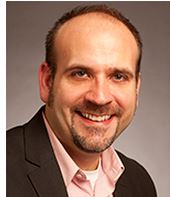
The Star Tribune reported yesterday afternoon that fourteen members of a community advisory committee to the Minneapolis Park Board want to re-name Lake Calhoun. The well-known city lake has carried the same name for nearly 200 years, long before Minnesota was a state. Only three members of the board voted “no” and four expressed “no preference” for changing the name of Lake Calhoun to the Sioux name Lake Bde Maka Ska. (It should be noted that some Sioux call it “Mde Maka Ska”)

Former Met Council Chair, Peter Bell, who lives on Lake Calhoun, and chairs the advisory group, resigned at yesterday’s meeting in frustration over the time spent debating the issue.
The Park Board decided earlier this month to authorize dual-names on the signs around Lake Calhoun. Board commissioner Brad Bourn has been a strong supporter for changing the name and made a motion that the issue be forwarded to the state legislature, which would need to approve any permanent change. Bourn’s motion failed, but this week’s advisory committee demonstrates the support to strip Calhoun from the lake’s name. Bourn was quoted in MPR about the need to change the name: “It’s been called Lake Calhoun by white tradition and white tradition of surveyors that just put the name on maps,” he said, “and it continued to be put on maps.”
Bourn tweeted out the following message yesterday questioning Bell’s decision to resign based on “racial equity”:

Lake Calhoun was named for Vice President John C. Calhoun who served under both John Quincy Adams and Andrew Jackson. Calhoun was a South Carolina Senator and Congressman. He served as Secretary of War under President Monroe and Secretary of State under President Tyler. He was an ardent supporter of slavery and the plantation system, calling the practice of slavery a “universal condition.” These views, now abhorrent, were a part of the national debate in the decades leading up to the Civil War.
As Secretary of War, Calhoun studied frontier defenses against the Indians and also sought to safeguard the Upper Mississippi from British traders and Red River colonists led by Scottish Lord Selkirk.. He confirmed the location of Minnesota’s Fort Snelling in 1818 after an expedition led by Major Stephen H. Long and authorized the fort’s construction.
The Star Tribune promoted the name change last month in “Dakota descendants seek new name, reclaimed history at Calhoun” which described the Sioux agricultural settlement near Lake Calhoun between 1829-1839. The Star Tribune reported that the Sioux left the village when “Objibwe incursions left the village’s several hundred people feeling vulnerable.” Well, that’s part of the story.
The Star Tribune neglected to mention that in July of 1839 the “Sioux-Chippewa” massacres were started when two Chippewa (Ojibwe) Indians scalped a Sioux hunter at the Calhoun settlement– they were sons of a Chippewa killed by a Sioux at Ft. Snelling the previous year. The two bands had been feuding for years.
The Sioux retaliated with war parties killing nearly 100 Chippewa, including women and children, in two attacks, one near the St. Croix River in Stillwater and the other near the Rum River near Anoka. Missionary Gideon Pond observed the gruesome celebration of the Sioux victory, “The next evening the dusky runners begin to arrive at Lake Calhoun, from the battle ground at Rum River. Red Bird is killed, his son is killed, the Chippewa are nearly all killed. Seventy scalps dangle from the poles in center of the village close by the tepee of the father-in-law of Philander Prescott. The scalp dance lasted for a month. It seemed as if hell had emptied itself here.”
The Minneapolis Park Board nor its advisory committee has any power to rename the lake that Minnesotans have only known as “Calhoun” for six generations. The state legislature would have to change a law in order to do so. Seeing that some current legislators are okay with removing language referencing pioneers and liberty from the State Capitol building, the attempt to change the names of geographical places based on political correctness may be just beginning in the North Star state.
Sources:
William A. Lass, Minnesota: A History, 2nd edition, 2000
Minnesota Historical Society Bulletin Vol. IV 1921-1922
S.W. Pond Jr., Two Volunteer Missionaries among the Dakotas, Samuel W. and Gideon H. Pond, 1893






